In Photos: 1,000-Year-Old Tomb with Colorful Murals Discovered in China
Mural tomb

Archaeologists in Datong City, in northern China, have discovered a tomb with colorful murals on the walls dating back around 1,000 years. The murals depict servants, cranes and a vast amount of clothing. The colors on the murals are vibrantly preserved despite the passage of a millennia of time. The entranceway was blocked by bricks but archaeologists could access the tomb through a hole in the roof, seen here.
Circular tomb
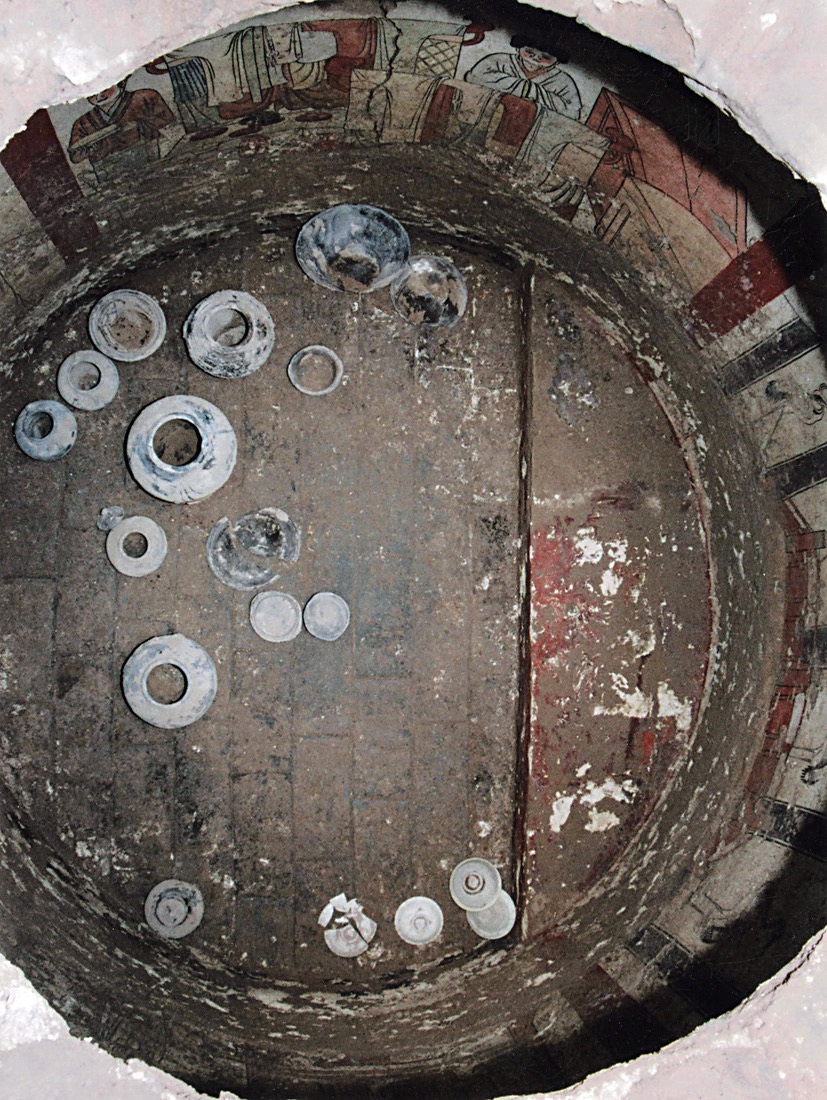
The tomb is circular and its walls are covered with murals. Inside the tomb, archaeologists found 15 artifacts, mainly ceramics. The occupants of the tomb had been cremated and their remains were placed in an urn. Archaeologists believe that the tomb likely belonged to a husband and wife.
Meal prep

A close-up showing part of the mural on the west wall. The servant appears to be preparing a meal.
Clothing abounds
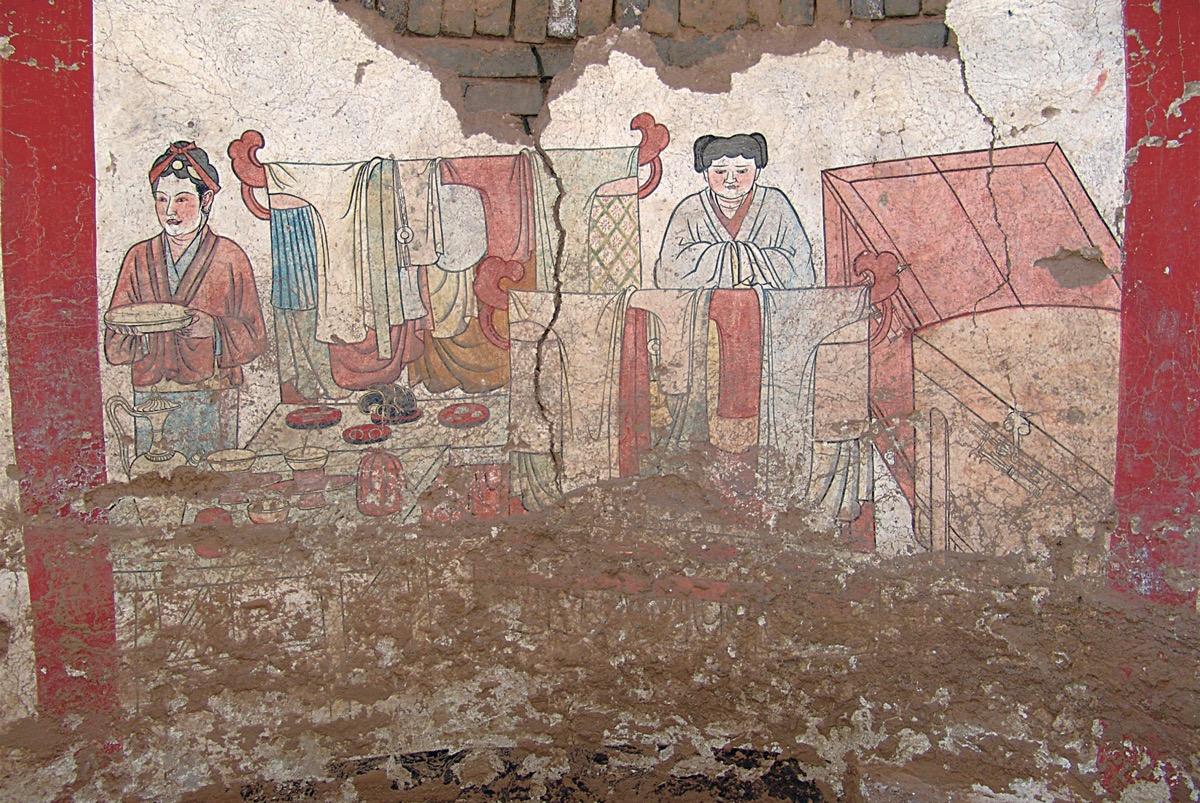
This photo shows the murals on the west wall of the 1,000-year-old tomb. Numerous articles of clothing are depicted hanging on stands. Two servants can also be seen. On the far right, two chests, one red and the other beige, can also be seen.
Green diamonds
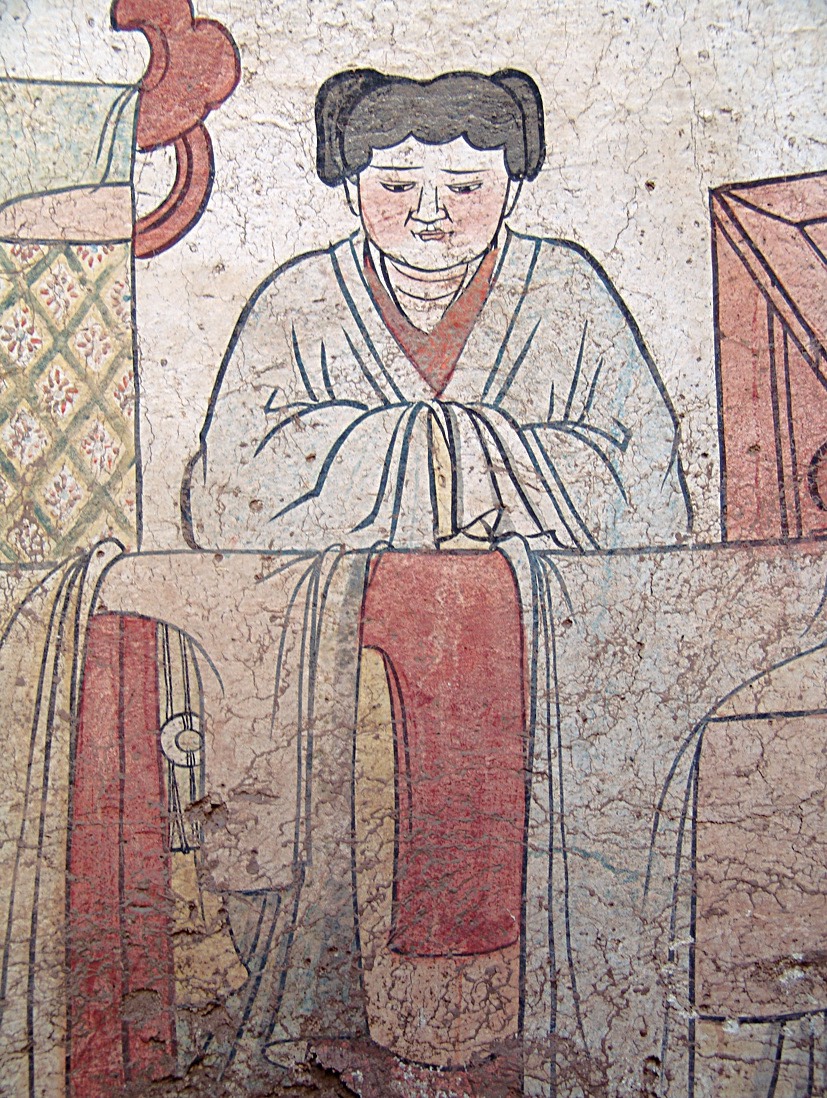
A close-up of another part of the mural found on the west wall of the tomb. The article of clothing on the servant's right has a green diamond-shaped pattern and each diamond has a red flower within it, archaeologists noted.
Male servant
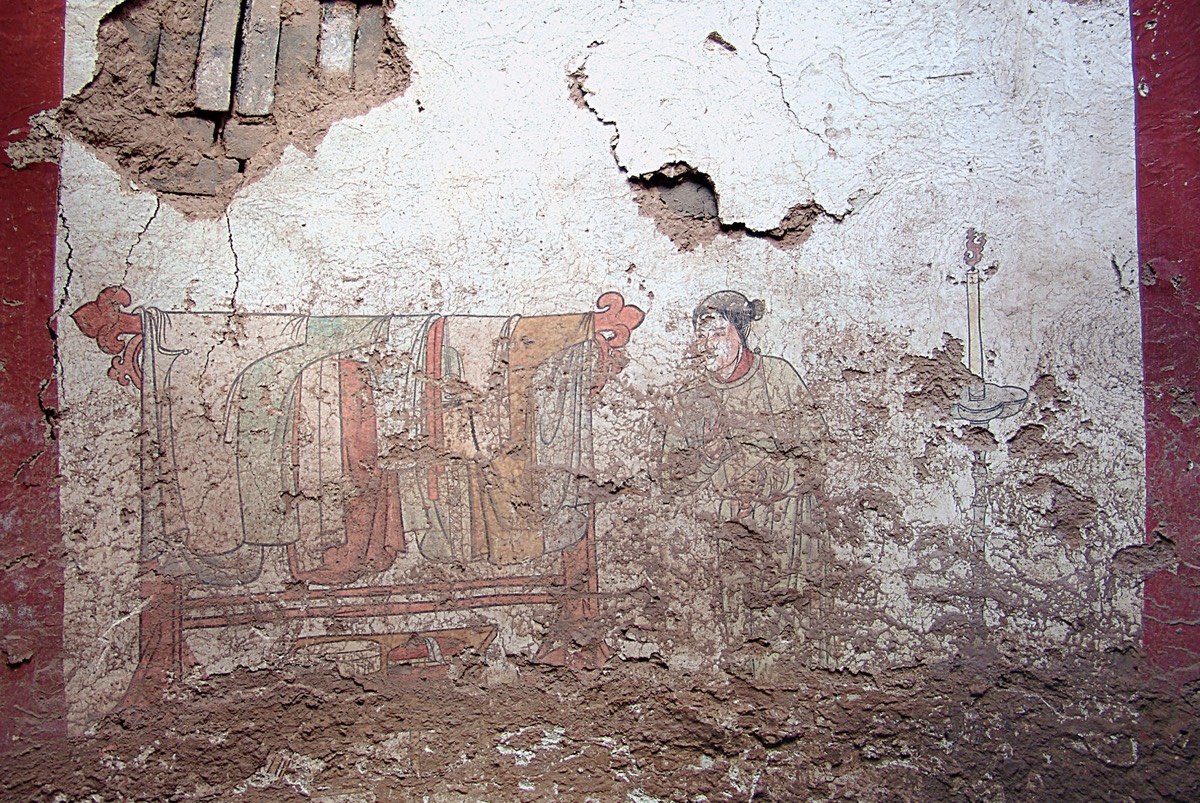
The mural on the east wall of the tomb also shows clothes hanging from a stand, along with a male servant holding a scroll. The mural on this wall has considerable damage.
Vibrant color

A close-up of one of the cranes found on the north wall of the tomb. The colors and details of the bird are remarkably well preserved.
Get the world’s most fascinating discoveries delivered straight to your inbox.
4 Cranes
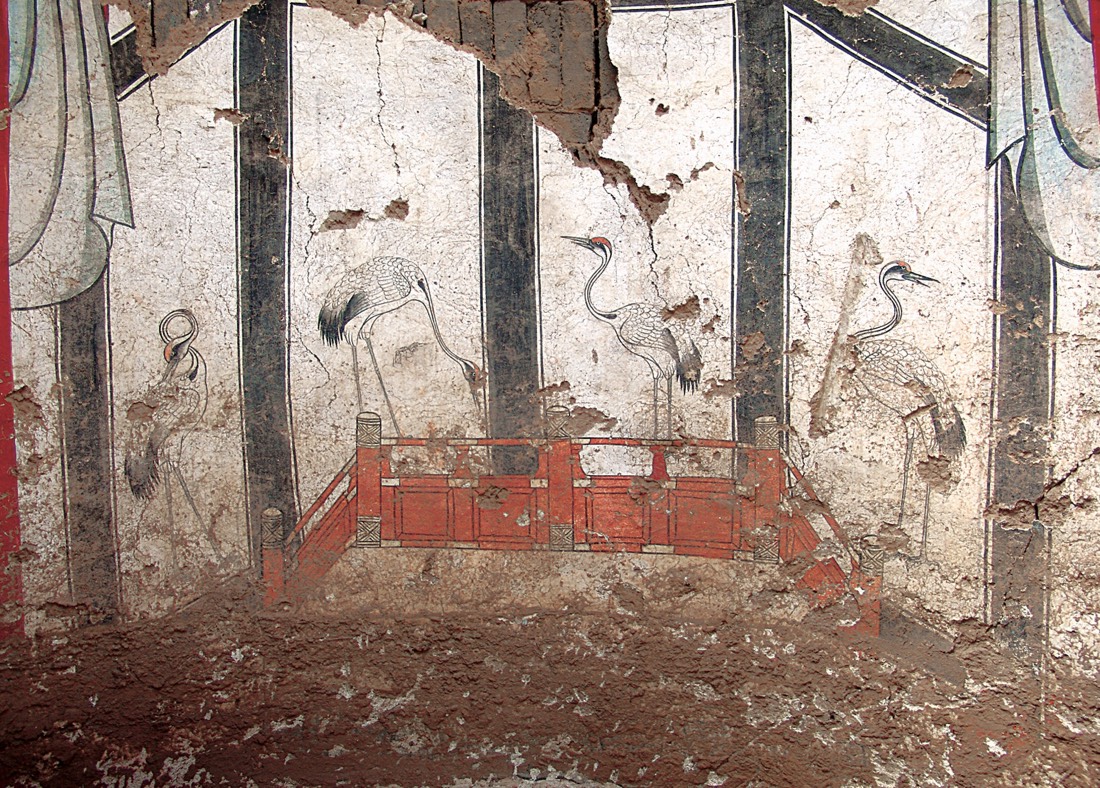
The north wall of the tomb has a mural that shows four cranes along with what archaeologists identify as an empty couch.
Blocked by bricks
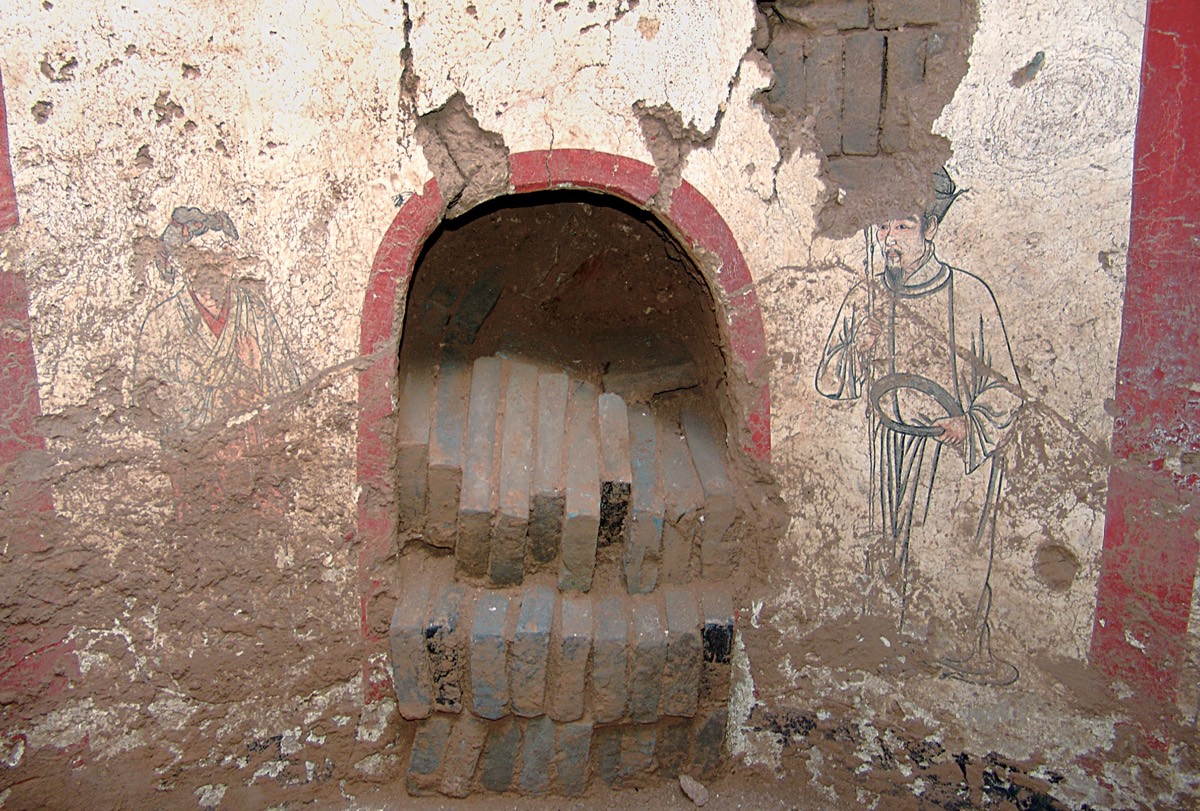
The tomb's entranceway is located on the south wall of the tomb. It was blocked off with bricks 1,000 years ago. Images of two servants can be seen flanking the entrance.

Owen Jarus is a regular contributor to Live Science who writes about archaeology and humans' past. He has also written for The Independent (UK), The Canadian Press (CP) and The Associated Press (AP), among others. Owen has a bachelor of arts degree from the University of Toronto and a journalism degree from Ryerson University.


